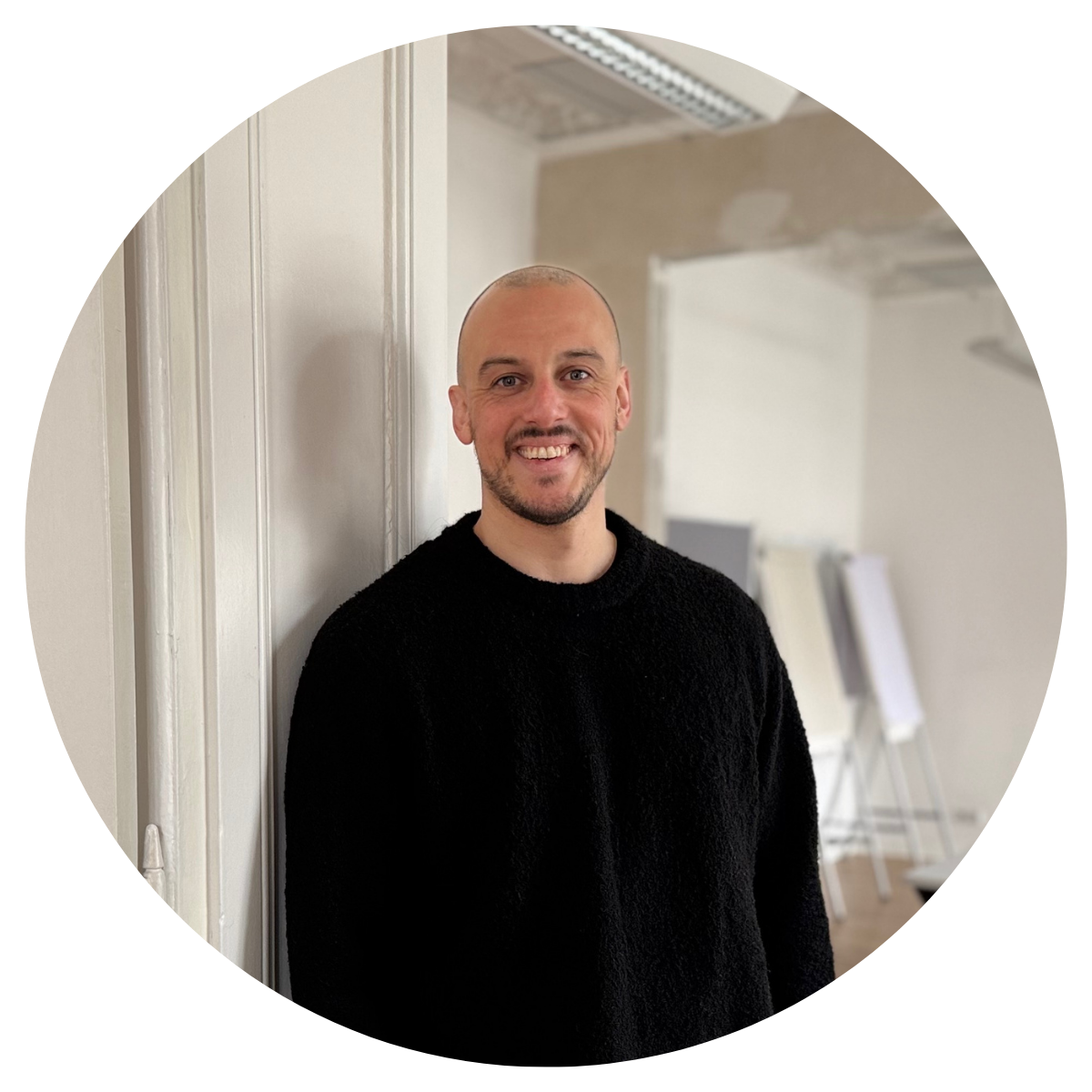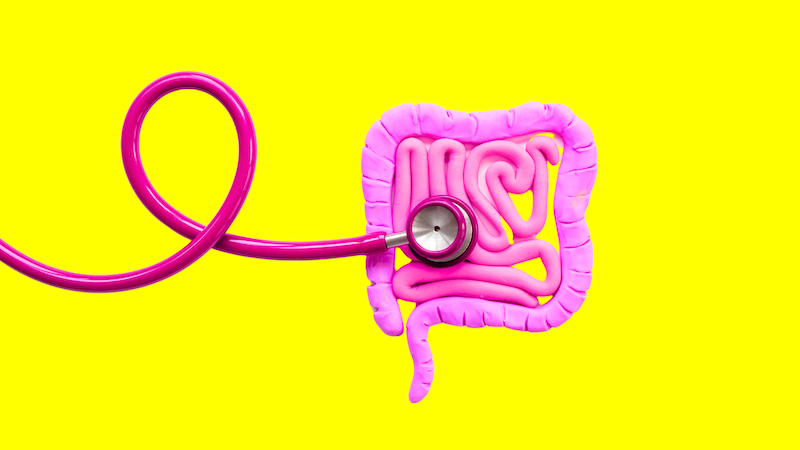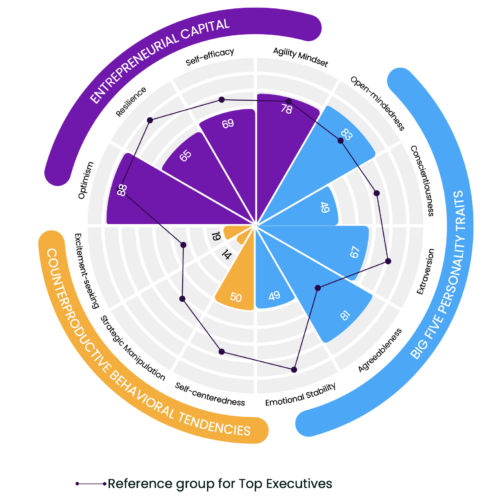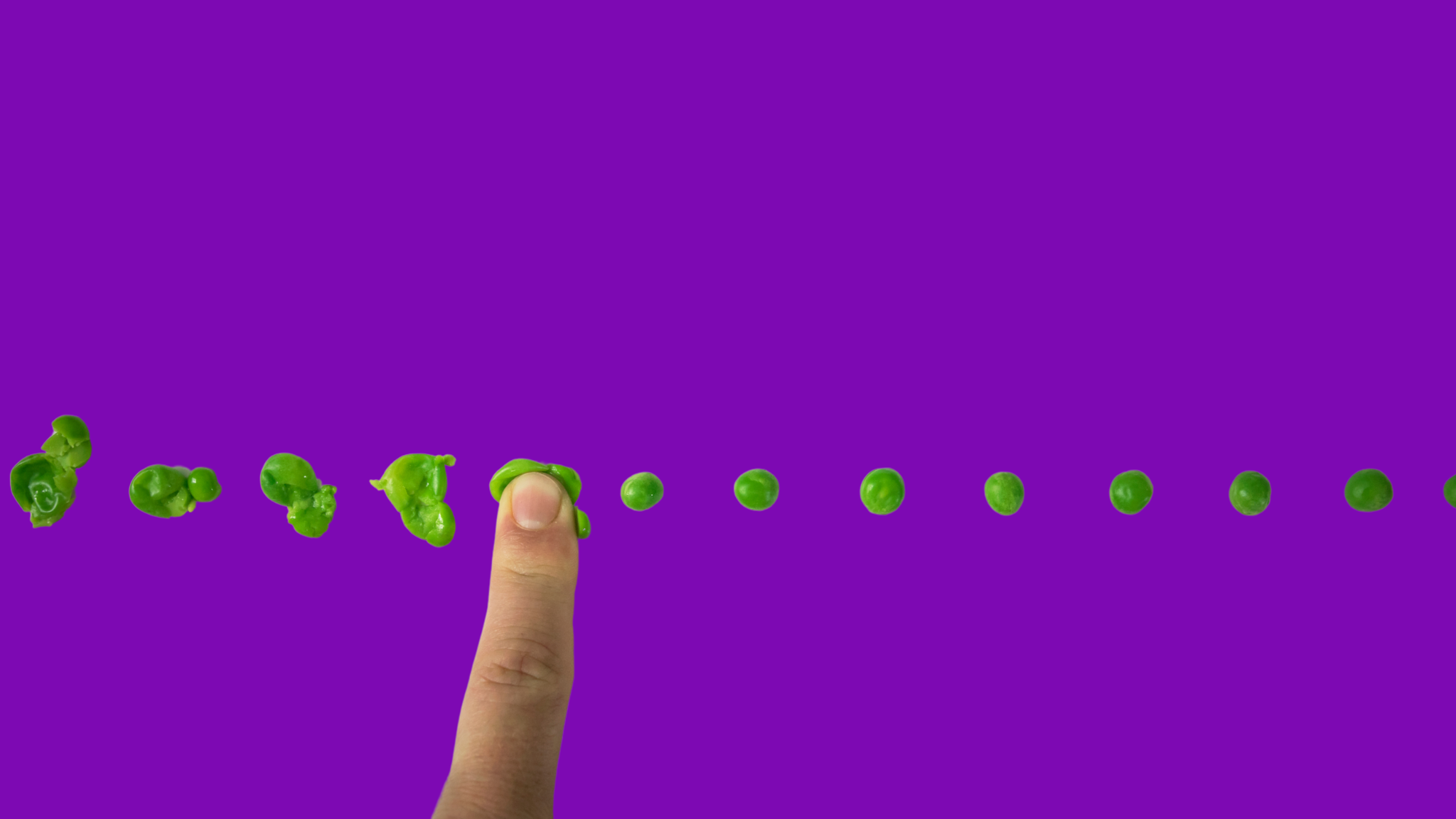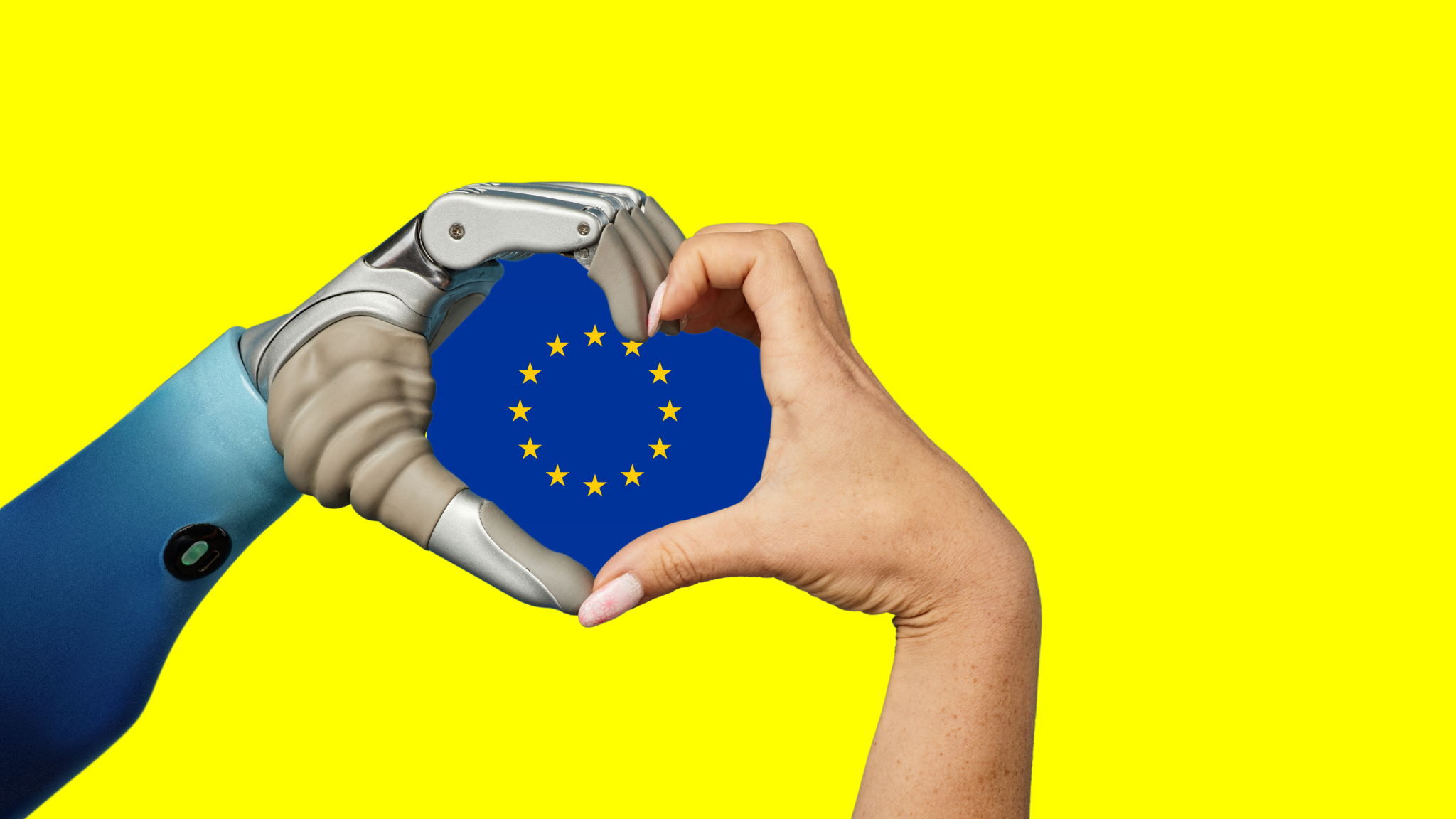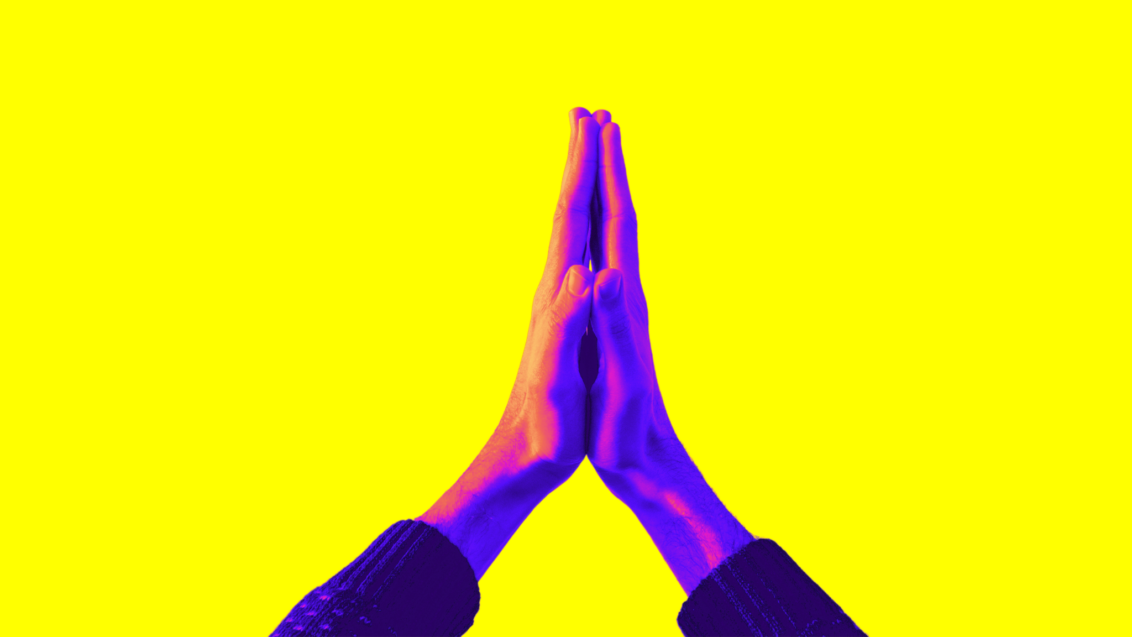Predicting retention: How companies can avoid costly employee turnover
In many organizations, the actual costs of turnover are overlooked in recruitment strategies. While enormous resources are invested in job profiles, hiring funnels, and assessment processes, one crucial question remains unanswered: Will the person hired today still be with the company in 18 months?
Current data shows an average misplacement rate of 14%, and as high as 30% in junior programs. With 50 hires per year, this already results in losses well into the six-figure range. Much of this cost could be avoided if recruiting took into account not only the probability of success, but also the probability of termination.
The true cost of employee turnover
The well-known cost factors, such as recruiting expenses, onboarding, and training, are only the tip of the iceberg. In fact, depending on the role, hiring the wrong person can cost between €45,000 and €100,000, and in the case of executives, up to €300,000. The direct costs of searching for and training new employees alone add up to as much as €60,000.
Added to this are hidden costs such as:
- Loss of productivity,
- demotivated teams,
- loss of expertise, and
- damage to reputation.
Companies have it in their own hands to avoid these. This is because employees often resign not because of the job itself, but because of a mismatch between expectations and reality – patterns that would have been visible during the recruitment process.
The unsurprising exit
Current data shows that early turnover is rarely a coincidence. 14% of employees leave because the tasks do not meet their expectations, and 17% leave due to a cultural mismatch. The SHRM Global Culture Report confirms that 64% of employees who perceive their corporate culture negatively actively look for another job.
The common denominator: a mismatch between expectations, culture, and personality. These risks are predictable, however, not through intuition, but through data-based personality analysis.
Recognizing invisible red flags
Truly costly mistakes are rarely caused by obvious warning signs, but rather by personality patterns that remain invisible during interviews. AI-based methods based on the Big Five and the Entrepreneurial Capital developed by Zortify make these risks measurable.
Among other things, the Big Five show:
- how stable someone remains under pressure (emotional stability and frustration tolerance),
- whether the need for autonomy and organizational structure are compatible, and
- how well people cope with change, ambiguity, and high complexity.
Entrepreneurial Capital adds to this analysis with future-critical skills like resilience, self-efficacy, agility, and solution orientation – the very factors that determine long-term performance and retention.
In combination, the Big Five and Entrepreneurial Capital reveal the invisible red flags that trigger early attrition: personality and context mismatches, fragile stress profiles, and unrealistic expectations. AI provides a solid basis for decision-making where gut feeling fails.
Predicting retention with AI
Modern NLP-based methods analyze how people think, prioritize, and deal with uncertainty. This results in a reliable prediction for long-term retention.
Companies that use such data can reduce their misplacement rate by 30%. Often, avoiding a single misplacement pays for the entire technology investment.
Typical green flags in applicants include:
- A realistic self-assessment,
- Value congruence,
- A conscious decision to take on the specific role, and
- The ability to communicate needs and boundaries.
At the same time, companies benefit from presenting everyday work life in a blunt manner. The best talents prefer realistic descriptions. Surprises on the first day, by contrast, undermine trust and drive turnover.
The business case: Data-driven decisions save a lot of money
For a company with 50 hires, the picture is as follows:
- Mismatch rate without data-driven methods: 14%, corresponding to 7 mismatches
- Costs: 7 × 45,000 = 315,000 €
- With personality analysis: Mismatch rate 10%, corresponding to 5 mismatches
- Costs: 5 × 45,000 = 225,000 €
- Savings: 90,000 € per year with a technology investment of around 35,000 €
- ROI: 2.6x, payback in less than 5 months
In addition to the financial effects, companies benefit from more stable teams, greater knowledge retention, better performance, and employer branding that signals long-term loyalty.
What companies can do straight away
- Short term: Analyze past cases of employee turnover: What signs were already visible during the recruitment process?
- Medium term: Track retention by hiring channel and personality profile, measure cultural fit and personalize onboarding based on individual profiles.
- Strategically: Early implementation of legally compliant, transparent AI systems to minimize bias and hiring risks, especially in light of the EU AI Act.
Using AI to tackle talent shortages
The most costly mistakes in recruiting are not the candidates who drop out of the process, but those who are hired and resign a few months later. Bad hires are not an isolated HR issue, but a strategic business risk in the six-figure range.
Personality-based assessments have thus become a business-critical tool. Organizations that can predict turnover make better decisions – and win in a market where talent is the scarcest resource.
Prof. Dr. Florian Feltes
Prof. Dr. Florian Feltes is co-founder and co-CEO of zortify and a forerunner in AI-supported HR innovation. Together with his team, he develops intelligent personality diagnostics and helps companies identify the perfect candidates—without expensive assessments and without bias. His vision: a world in which every company can effortlessly form high-performance teams and create work environments that allow human potential to flourish.
Who’s behind that perfect prompt?
How talent stands out and companies recognize who really fits.
The application sounds flawless. Every word is perfect. Every phrase hits the right note. And that’s exactly the problem. Since ChatGPT & Co. have reached the application process, documents are becoming increasingly similar.
Predictive hiring: How HR can identify employee engagement during the interview
And why brilliant resumes often lead to expensive hiring mistakes
The resume shines, the interview goes smoothly, the references seem flawless. But six months later, it becomes clear that although the new colleague is highly qualified, they have long since quit quietly.
The recruiting advantage: Why quick decisions bring in better talent
Speed in recruiting is not an operational detail, but a strategic competitive factor. Companies that take too long to make decisions systematically lose the best candidates to more agile competitors. Studies also show that longer processes do not result in better hires. On the contrary.
Who’s behind that perfect prompt?
How to Hire for Authenticity In Times of GPT Applications
The application sounds flawless. Every word is perfect. Every phrase hits the right note. And that’s exactly the problem. Since ChatGPT & Co. have reached the application process, documents are becoming increasingly similar. Studies show that around half of all applicants already use AI tools to help them. Among students, the figure is as high as 57%.
What began as the democratization of good applications is developing into a new challenge: if everyone’s wording is perfect, how can I still stand out as an applicant? And how can companies recognize who really suits them?
From perfection to uniformity
Resumes are smoothed out and cover letters are optimized, often losing their personal touch in the process. For companies, this means that traditional application documents say less and less about personality, motivation, or potential.
At the same time, applicants are faced with the question of how they can show who they really are when AI helps them do everything “right”?
Because one thing is becoming increasingly important: authenticity. Especially in a job market that is once again becoming more of an employer’s market in many industries, it’s no longer just perfect documents that count. What is needed are people who want to learn, who can adapt, and who deal with their strengths and weaknesses in a reflective manner.
Personality is not expressed in clichés
Psycholinguistic research – such as that conducted by James Pennebaker – shows that our language patterns are as individual as fingerprints. It is not what we say, but how we phrase things that reveals a lot about our way of thinking, decision-making logic, and values. That is why modern recruitment processes are no longer about delivering the perfect cover letter, but about showing how you think, act, and reflect.
Open, situation-specific questions – for example, about real experiences, difficult decisions, or learning moments – create this space for authenticity. This is where human substance outstands the smooth surface of AI. A machine may be able to write convincingly, but it has no real attitude, no conscience, no learning curve.
Smart selection – a win for both sides
Technology can help to reveal these genuine signals – for example, through linguistic pattern recognition and NLP-based analyses. It identifies the essential personality factors for a role, creates an objective basis for evaluation, and facilitates the final assessment by an experienced recruiter.
Old: CV screening – interview – assessment – hiring decision
New: Initial pre-selection – AI assessment – In-depth interview – Data-informed hiring decision
For companies, this means spending less time on superficial CV and oh-so-smooth motivation letter screenings and focusing more on what really matters: potential, learning ability, and cultural fit.
Gen Z, on the other hand, is generally open to such technology-based assessments if they are perceived as fair. At the same time, applicants who come across as honest, reflective, and authentic have a much better chance of standing out from the crowd in a personality-oriented selection process.
Authenticity leads to the perfect fit
Bottom line: The best talents are not those who shine with the most flawless applications, but those who show who they are, what they want to learn, and how they deal with challenges.
When AI standardizes applications, a new level of differentiation emerges, especially in working with Gen Z: authenticity. Applicants can use this level to their advantage. Companies, in turn, have state-of-the-art AI technology at their fingertips to identify the qualities they value most in candidates. In the end, both sides benefit from a perfect match between role and person.
Personality plays the key role in this. And regardless of perfect prompts, it remains unmistakable at its core.
Prof. Dr. Florian Feltes
Prof. Dr. Florian Feltes is co-founder and co-CEO of zortify and a forerunner in AI-supported HR innovation. Together with his team, he develops intelligent personality diagnostics and helps companies identify the perfect candidates—without expensive assessments and without bias. His vision: a world in which every company can effortlessly form high-performance teams and create work environments that allow human potential to flourish.
Predictive hiring: How HR can identify employee engagement during the interview
And why brilliant resumes often lead to expensive hiring mistakes
The resume shines, the interview goes smoothly, the references seem flawless. But six months later, it becomes clear that although the new colleague is highly qualified, they have long since quit quietly.
The recruiting advantage: Why quick decisions bring in better talent
Speed in recruiting is not an operational detail, but a strategic competitive factor. Companies that take too long to make decisions systematically lose the best candidates to more agile competitors. Studies also show that longer processes do not result in better hires. On the contrary.
EU AI Act: How smart companies are using regulations to outperform competitors
What HR Must Do Now.
The EU AI Act has been in force since August 2024, and further compliance deadlines passed in August of this year. For companies that use AI tools in recruiting and human resources development, this means that the legal gray area is over.
Predictive hiring: How HR can identify employee engagement during the interview
And why brilliant resumes often lead to expensive hiring mistakes
The resume shines, the interview goes smoothly, the references seem flawless. But six months later, it becomes clear that although the new colleague is highly qualified, they have long since quit quietly. A classic mismatch that not only eats up salary and recruiting costs, but also destabilizes teams, strains customer relationships, and delays projects.
Gallup estimates the global cost of lack of engagement at $8.9 trillion per year. That’s almost nine percent of global GDP. Only 21% of employees are engaged at work, 62% do the bare minimum, and 15% actively work against their managers and teams. These figures illustrate that the problem does not begin on the first day of work, but already during the recruiting process. Many companies carefully check whether candidates can perform the tasks. However, the crucial question is: Will this person be really committed to the job?
What drives engagement
Engagement is not a “nice-to-have,” but rather the most important performance driver in modern organizations. Gallup and other studies identify three areas of relationships that have a significant impact on motivation, loyalty, and thus also results:
- Employees – managers: Trust, clarity, and meaning are crucial here. Up to 70% of the differences in employee engagement can be directly attributed to the manager.
- Employees – Colleagues: Teams with high engagement have 59% less turnover, even in organizations with generally high turnover rates.
- Employees – Customers: Engaged employees increase customer satisfaction by 10% and sales by up to 20%.
These relationships are not soft factors. They determine whether a project succeeds, whether a team sticks together, and whether customers remain loyal in the long term. Nevertheless, traditional interviews hardly capture factors that indicate a successful relationship on these three levels. A standard question such as “Are you a team player?” says nothing about whether someone can actually build functioning relationships in the work environment.
Personality as the key to engagement
Personality research has shown that traits such as conscientiousness, agreeableness, and low neuroticism scores (emotional stability) are reliable predictors of performance, loyalty, and customer focus. However, traditional questionnaires cannot measure these traits reliably. Instead, recruiters get:
- Social desirability: Candidates know which answers seem “right.”
- The interview persona: Applicants’ answers that reflect a deliberately constructed image rather than their authentic personality.
Companies feel secure, but the results are distorted – and bad hires are inevitable.
Language reveals engagement potential
Companies that want to make sure they get engaged employees rely on a thorough personality analysis of their applicants, using the latest AI tech and Natural Language Processing (NLP). Studies show that people can consciously control what they say, but not really how they say it. Choice of words, sentence structure, punctuation – all of these reveal initial signs of personality patterns that are difficult to conceal. Based on open-ended text responses that candidates formulate in a relaxed atmosphere at their desk, AI recognizes factors such as an increased risk of egocentrism or a strong orientation toward cooperation –differences that are crucial for assessing engagement potential long before it becomes apparent in everyday work. Important: Higher scores aren’t a reason to disqualify a candidate, but they give the interviewer important clues about what questions to ask during the job interview.
Engaged employees accept leadership
An often overlooked aspect: commitment depends not only on how well a manager leads, but also on whether employees can recognize and accept good leadership. A study from 2021 shows that employees with high self-efficacy and openness remain more committed even under mediocre leadership, while others are quicker to withdraw. This means that it is not only managers who are responsible for commitment. The personality of the employees also determines whether leadership is effective. Those who accompany change constructively, place trust in others, and support decisions remain motivated longer, even in difficult environments. These qualities are critical to success, especially in demanding industries such as consulting or finance, where uncertainty and regulation are part of everyday life, or in the tech sector, where priorities are constantly shifting.
Employee engagement drives business success
The economic effects of high employee engagement in companies are measurable:
- 37% higher productivity in highly engaged teams,
- 23% higher profitability because motivated employees create better customer experiences,
- 65% lower staff turnover.
This contrasts with the immense costs of hiring the wrong person. On average, this costs 1.5 to 3 times the annual salary and often runs into six figures for senior roles in IT, consulting, or finance. A more precise selection based on authentic personality profiles costs only a fraction of this. And usually pays for itself already by avoiding a single wrong hire.
From skill match to commitment match
The crucial question for CEOs, HR executives, and recruiters today is no longer: Can this person do the job? But rather: Will they be engaged in doing it? AI-based personality analyses and the evaluation of open-ended text responses provide a valid answer to this question. These methods are difficult to manipulate and can be integrated into the recruiting process immediately.
Those who identify tendencies toward relationship skills in the three critical areas – with managers, teams, and customers. Before the first interview not only make better hiring decisions, but also strengthen the resilience and competitiveness of their organization.
Prof. Dr. Florian Feltes
Prof. Dr. Florian Feltes is co-founder and co-CEO of zortify and a forerunner in AI-supported HR innovation. Together with his team, he develops intelligent personality diagnostics and helps companies identify the perfect candidates—without expensive assessments and without bias. His vision: a world in which every company can effortlessly form high-performance teams and create work environments that allow human potential to flourish.
Introverted top talents are being overlooked
Extraversion has long been considered an indicator of leadership quality, which is why extroverted candidates have a clear advantage in selection processes. However, recent studies show that this preference often has little to do with actual performance. This highlights a key problem in executive search: traditional methods overlook introverted top talent.
EU AI Act: How smart companies are using regulations to outperform competitors
What HR Must Do Now.
The EU AI Act has been in force since August 2024, and further compliance deadlines passed in August of this year. For companies that use AI tools in recruiting and human resources development, this means that the legal gray area is over.
The Charisma Trap: Why Shiny Leaders Don’t Shine in Crisis
In the first few weeks of this year, 222 CEOs resigned. A record since surveys began in 2002 and 14% more than in the previous year. What is particularly alarming is that 19% of successors were only appointed on an interim basis, compared to just 6% at the start of 2024.
Introverted top talents are being overlooked
– and companies are losing out
Extraversion has long been considered an indicator of leadership quality, which is why extroverted candidates have a clear advantage in selection processes. However, recent studies show that this preference often has little to do with actual performance. This highlights a key problem in executive search: traditional methods overlook introverted top talent. Companies are thus missing out on some of their strongest leaders.
This bias can have serious consequences, especially in high-profile industries such as finance, insurance, and consulting, where strategic depth and risk awareness are crucial.
The hidden pitfalls of traditional selection processes
Assessment centers: performance over substance
The problem lies in the DNA of traditional assessment procedures. Studies show that 60% of interviewers make their decision about candidates within the first 15 minutes, and 5% even within the first minute. These snap judgments are inevitably based on superficial factors such as charisma, eloquence, and “executive presence” — qualities that favor extroverted candidates.
Assessment centers further reinforce this bias: in group discussions, the louder voices naturally dominate, while thoughtful contributions are lost. What is considered assertiveness is often just another form of information processing.
The cultural fit illusion
Harvard professor Youngme Moon sums it up: “Soft stuff” is often just a euphemism for bias. People hire individuals who are similar to them, who they feel comfortable with, who look, act, and speak like them.
The supposed “cultural fit” thus becomes a gateway for similarity bias. Introverted candidates are rejected as “unsuitable,” even though they may be professionally and strategically superior to extroverted applicants.
Network effects reinforce homogeneity
A study of 123 German executive search consultants revealed a significant in-group bias: male headhunters unconsciously favored male candidates. Comparable mechanisms also operate among extroverts: those who are well connected and skilled at marketing themselves are more likely to be “discovered,” regardless of their actual performance.
What companies are missing out on
Strategic advantage in volatile times
Current research also shows that introverted leaders excel in “intellectual stimulation” and “empowering leadership,” leadership styles that offer key advantages in complex, dynamic markets.
These qualities are highly valued in the sometimes heavily regulated industries in the DACH region. Examples:
- Finance & insurance: Thorough risk analysis and strong compliance awareness
- Consulting: Sustainable solutions instead of short-term quick wins
- All industries: Effective crisis management through prudence instead of actionism
The self-awareness advantage
A Korn Ferry analysis of 486 companies with 7,000 employees revealed that organizations with weak financial performance had executives with 20% more “blind spots” and a 79% higher likelihood of low self-awareness.
Introverted leaders tend to have greater self-awareness, a competitive advantage that translates directly into business performance.
Leadership of the future
Other studies have found that introverted leaders are better than extroverted ones when it comes to leading proactive teams. In a working environment where initiative and empowerment are crucial, managers who are perceived as “reserved” prove to be more effective.
AI-supported solution: Objectively assessing personality potential
The limits of human assessment
The figures should make companies pay attention: 48% of neurodivergent people report in the “Neurodiversity at Work Report 2024” that they find recruitment processes unfair and biased. This is a group that often exhibits introverted characteristics.
The problem becomes even more apparent in blind hiring: it increases the likelihood of women being hired by 25 to 46%. This shows how strongly superficial impressions influence hiring decisions and systematically disadvantage people. Training on unconscious bias is of little help: 48% of HR managers still admit that bias influences their decisions.
Data-driven alternatives
The solution lies in objective, AI-supported personality analysis. It gives decision-makers a truly realistic first impression of a candidate. Within a very short time, AI tools can use the extent of certain personality traits to predict expected business performance and teamwork.
Specific advantages:
- Objective evaluation: Intelligent hiring assistants measure competence rather than communication style.
- Predictive analytics: They predict leadership success based on empirical data.
- Bias reduction: Modern, ethically developed AI systems can eliminate human bias in candidate selection.
Integration into existing processes
Important to note: AI does not replace human evaluation, but rather complements it intelligently. While traditional methods rely on subjective first impressions, data-driven assessments can reliably predict actual leadership competence, regardless of personality type.
Recommendations for HR and C-level executives
Short-term measures:
- Critically examine bias training: Implement structured processes instead
- Diversify assessment formats: Use written analyses and structured one-on-one interviews
- Make evaluation criteria more objective: Less “cultural fit,” more measurable skills, and the courage to embrace “cultural add.”
Investing in AI-supported tools pays off by reducing the costs of bad hires while increasing leadership quality and team satisfaction.
Conclusion: The silent paradigm shift
The future should belong not to the loudest, but to the most capable leaders. Introverts often have skills that are needed in the modern workplace. Leadership research shows the measurable advantage of introverted leadership in proactive teams, i.e., those that perform at their best in demanding and rapidly changing environments. So it’s worth keeping your eyes and ears open, making the nuances audible, and reading between the lines. AI technology makes it easy for you and reliably ensures that the right people end up in the right positions.
Prof. Dr. Florian Feltes
Prof. Dr. Florian Feltes is co-founder and co-CEO of zortify and a forerunner in AI-supported HR innovation. Together with his team, he develops intelligent personality diagnostics and helps companies identify the perfect candidates—without expensive assessments and without bias. His vision: a world in which every company can effortlessly form high-performance teams and create work environments that allow human potential to flourish.
The best teams are not made up of clones!
Cultural fit has long been considered the gold standard in recruiting. The idea: if you fit perfectly into the team, you will automatically be more successful. But what was intended as a quality feature is increasingly turning out to be a brake on innovation.
The Charisma Trap: Why Shiny Leaders Don’t Shine in Crisis
In the first few weeks of this year, 222 CEOs resigned. A record since surveys began in 2002 and 14% more than in the previous year. What is particularly alarming is that 19% of successors were only appointed on an interim basis, compared to just 6% at the start of 2024.
Your Gut Feeling is Gutting Your Talent Pipeline
AI is neither all good nor all bad. Used correctly, it can improve the lives of many people in general and working life in particular. New opportunities are opening up in HR recruitment and development in particular, without people being ” sorted out ” or replaced by technology.
The Charisma Trap: Why Shiny Leaders Don’t Shine in Crisis
In the first few weeks of this year, 222 CEOs resigned. A record since surveys began in 2002 and 14% more than in the previous year. What is particularly alarming is that 19% of successors were only appointed on an interim basis, compared to just 6% at the start of 2024.
These figures are not just a symptom of political uncertainty, but an expression of a deeper problem: HR professionals often choose the wrong personality types when hiring executives. The fascination with charismatic, extroverted candidates leads to personalities with high self-presentation skills reaching top positions – often at the expense of character and substance.
The lure of first impressions
The Childhood Leadership Study of 2025 already showed that in 96% of classes, children with a strong self-expression are chosen as leaders. This pattern continues in professional life. Charismatic candidates shine in job interviews, appear self-confident, inspiring and present convincing visions. Meta-analyses confirm this: Especially in application and selection processes with strangers, such personalities are systematically preferred.
Charles O’Reilly from the Stanford Graduate School of Business warns:
“We see the 10% of self-promoters who succeed and call them visionaries. We ignore the 90% who fail and do damage.”
This effect reminds us of fast, aggressive brands like Shein or Temu: shiny promises, quick wins, but often with unseen costs and long-term damage.
Introverted beats loud
Studies confirm that introverted CEOs are more successful in the long term than their extroverted colleagues. These quieter leaders make more considered decisions and act more sustainably. Nevertheless, many selection processes still favor the opposite: loud, shiny, extroverted.
The short-term effect is tempting, and yes, sometimes legitimate in terms of quick success: A charismatic candidate can, for example, inspire stakeholders, generate momentum and attract media attention. In the long term, however, they often lack strategic depth, genuine team orientation and the ability to maintain calm and foresight even in difficult phases. Impulsive decisions or risky prestige projects lead to higher fluctuation, declining trust and often to financial losses and damage to the company’s image. In the medium term, the initial “gain” turns into a painful “pain” for the entire organization.
The true cost of bad hires
According to McKinsey and Kienbaum, bad hires in management positions can cost up to three times the annual salary. For C-level roles, these losses quickly add up to millions. In addition, there are serious follow-up costs that are difficult to measure: toxic corporate cultures, increasing fluctuation, risky takeovers or manipulated share buybacks.
All of this not only reduces company performance, but also jeopardizes the trust of employees, investors and markets, with long-term consequences for reputation and competitiveness.
Young executives in constant self-promotion mode
Our 2021 study for Harvard Business Manager with almost 10,000 German participants shows that self-promotion-oriented tendencies are widespread among German managers. Young executives are particularly likely to succumb, exacerbated by social media and the trend towards personal branding. Three critical patterns stand out: excessive self-centeredness, impulsive risk-taking behavior and strategic manipulation to assert one’s own interests. These developments clearly show how important alternative selection methods are for companies.
AI instead of gut feeling
Traditional assessments are reaching their limits here. They are usually based on self-assessments, a playing field in which self-promoters are particularly adept. NLP-based analyses (Natural Language Processing) take a different approach: they work with candidates’ open text responses and uncover unconscious language patterns that allow conclusions about key personality dimensions. This makes manipulation much more difficult, while at the same time providing a deeper, more objective assessment.
Such approaches not only help in the selection of new leaders, but also in the further development of existing top managers. They provide a sound basis for coaching, succession planning and long-term cultural development that goes far beyond mere recruitment decisions.
Character as a competitive advantage
Companies that rely on objective, technology-supported personality analyses at an early stage gain more than just security when filling key roles. They create a corporate culture in which character, integrity and long-term thinking count. This creates a real competitive advantage: teams work together with greater trust, strategic risks are reduced and the retention of key performers increases.
In the end, it’s not about devaluing charisma. Rather, it is about combining it with character, substance and foresight. This is the only way for companies to ensure that their managers not only shine in good times, but also provide orientation, create trust and ensure stability in times of crisis.
Prof. Dr. Florian Feltes
Prof. Dr. Florian Feltes is co-founder and co-CEO of zortify and a forerunner in AI-supported HR innovation. Together with his team, he develops intelligent personality diagnostics and helps companies identify the perfect candidates—without expensive assessments and without bias. His vision: a world in which every company can effortlessly form high-performance teams and create work environments that allow human potential to flourish.
The best teams are not made up of clones!
Cultural fit has long been considered the gold standard in recruiting. The idea: if you fit perfectly into the team, you will automatically be more successful. But what was intended as a quality feature is increasingly turning out to be a brake on innovation.
If your CHRO is still counting heads, you’re already losing the best ones!
The figures are clear – and alarming: while IT and marketing are allocated 3.14% and 7.5% of turnover each, HR receives a mere 0.8% on average. This is shown by the current Gartner study “2025 CHRO Budget Benchmarks”.
Your Gut Feeling is Gutting Your Talent Pipeline
AI is neither all good nor all bad. Used correctly, it can improve the lives of many people in general and working life in particular. New opportunities are opening up in HR recruitment and development in particular, without people being ” sorted out ” or replaced by technology. Let’s take a look at what is important for a fearless, constructive and responsible approach to AI in HR.
Your Gut Feeling is Gutting Your Talent Pipeline
A New Way of Looking at HR Efficiency
We think we’re thorough. Our HR processes are well thought-out. Our hiring decisions are sound. Research says: We’re wrong.
The uncomfortable truth: our brain makes a judgment about our conversation partner in the first few seconds. Even if the final decision for or against an applicant is not made until minutes later, the course has already been set. The rest of the interview? – Simply a search for confirmation. We are not looking for the best candidate, but for reasons why our gut feeling is right.
No second chance to make a first impression? – There is!
The mantra “There is no second chance for a first impression” is not only wrong in recruiting, it is reckless. It justifies hasty gut decisions and superficial judgments. The fact is that first impressions are almost always incomplete and often irrelevant.
What happens in our heads in the first few seconds? We evaluate voice, appearance, handshake, eye contact – all things that have little or nothing to do with job performance. 48% of HR decision-makers openly admit that prejudices influence their decisions. Realistically, this figure is closer to 100%.
The next 30 minutes of the interview are therefore not much more than a stage for confirmation bias.
- The brilliant but introverted developer? “Not present enough.”
- The experienced executive with an accent? “Not a strong communicator.”
This is not an exception. This is the system. The pressure is real, as is the self-deception. Time-to-hire is tracked, jobs actually have to be filled yesterday, and we tell ourselves we are thorough. But we are not. Above all, we are thoroughly biased.
AI breaks the cycle
While we supposedly carefully screen applicants, modern AI analyzes hundreds of relevant personality traits in a focused, precise and objective manner within the very same time period. What our intuition compromises, AI perfects in milliseconds. It gives every candidate a real second chance. Based on data, not prejudice. While we search for confirmation, AI emotionlessly scans what really counts.
When humans reach their limits and machines shine
Our brains are still optimized for the Stone Age, i.e. for quick friend-foe recognition, not for differentiated HR decisions in a globalized knowledge society. Unconscious Bias is an evolutionary feature, not a bug that can just be fixed.
What AI can do in seconds:
- Analyze hundreds of personality dimensions
- Assessment without cultural bias
- Consistent standards for all applicants
- Prediction of job performance based on valid data
What people do in the same time:
“He seems likeable.”
“She doesn’t fit into the team.”
In short: we fall for our prejudices based on skin color, gender, accent or similarities between the applicant and our own CV. The “cultural fit” is often just a cover for these unconscious prejudices. Universities attended together, familiar names, similar biographies: all this acts as a filter. Unfortunately, it is the wrong one.
The question to CEOs: Would you invest like this?
Would you invest a million euros on gut feeling? Without data, without analysis, without risk assessment?
No?
So why do you make the most important business decision – the one about your staff – like an impulse purchase? Every bad hire costs you 1.5 to 3 times the annual salary. In the case of managers, it can quickly add up to over €200,000 per mistake. Human intuition” is the most expensive poor decision your company makes. You invest six-figure amounts in employer branding, while your selection process scares top talent away. Rejected applicants talk to each other. Bad experiences go viral – and cost you the next generation of talent.
AI does not make us unemployed, it makes us better.
AI does not replace people. It replaces bad human decisions. A good AI analyzes more data in seconds than we humans do in an entire conversation. Not because it is smarter, but because it is not distracted. Modern AI-supported diagnostics filter precisely, efficiently and objectively. NLP technology recognizes personality patterns and skills while we are still thinking about whether the handshake was firm enough. The game changer: when AI makes the pre-selection, we are no longer evaluating “a person”, but “a promising candidate who has already been objectively assessed”. Our bias no longer has a chance to shape the conversation from second one.
Strategies for the AI-supported revolution in recruitment
The human touch is out of place in recruiting. The new generation of applicants expect fairness, not folklore. They want to be evaluated for what they can do, not for how familiar they seem to us. Companies with AI-supported recruiting will therefore systematically attract the better talent.
Here’s how you can get started:
- Objective data instead of subjective impressions: Define measurable criteria for each role. Let AI evaluate before humans decide.
- Intelligent pre-selection = efficiency: Use AI for initial, data-based filtering. Then you can concentrate 100% on the really promising candidates. This way, you combine machine precision with human judgment. The process is quick and thorough.
- Feedback loops: Measure the success of your hires after six months. Which of your gut decisions has proven successful? (The truth might hurt).
- Diversity by design: Integrate fairness directly into the process. Good AI is not neutral, it is intentionally inclusive. Choose providers wisely. To the checklist
The moment of truth
We have two options:
Option 1: Carry on as before. Convince ourselves that 30 years of recruiting experience is more objective than data-based analysis. Watch systematic bias cost our team millions and drive the best talent to the competition.
Option 2: Gather the courage to recognize our own limitations and use AI for what it is: a tool that does in seconds what humans overlook in minutes. Objective pre-selection that gives every candidate the fair chance he or she deserves.
The decision is up to us. But if we now make it based on gut feeling again, we have not yet understood this text.
Prof. Dr. Florian Feltes
Prof. Dr. Florian Feltes is co-founder and co-CEO of zortify and a forerunner in AI-supported HR innovation. Together with his team, he develops intelligent personality diagnostics and helps companies identify the perfect candidates—without expensive assessments and without bias. His vision: a world in which every company can effortlessly form high-performance teams and create work environments that allow human potential to flourish.
If your CHRO is still counting heads, you’re already losing the best ones!
The figures are clear – and alarming: while IT and marketing are allocated 3.14% and 7.5% of turnover each, HR receives a mere 0.8% on average. This is shown by the current Gartner study “2025 CHRO Budget Benchmarks”.
EU AI Act – HR Must Deliver on AI – But Not Alone
As the possibilities of AI grow, so do the requirements for the careful and responsible use of AI systems. The EU AI Act, which has been gradually coming into force since February of this year, places greater responsibility on companies and makes AI expertise not just a competitive advantage, but a legal obligation.
“We don’t just invest in technology – we invest in our people.”
Sandra, Spuerkeess is known for stability and tradition. At the same time, you focus heavily on innovation in your HR strategy. What was the reason for rethinking the topic of internal mobility?
Spuerkeess has always successfully adapted to changing market conditions.
Personality vs. hard skills:
Why companies often make the wrong decisions despite knowing better
A recent study in which we surveyed over 100 HR experts in German companies clearly shows that the majority of companies are aware of the importance of personality and soft skills in recruiting. Many HR professionals are also aware of their own shortcomings when it comes to finding the right talent for the right positions. At the same time, they are hesitant about using the latest AI technology to make better decisions. The fact that the big American tech providers in particular are focusing on AI is certainly a major factor in this. It is therefore time to focus on what ethical AI made in the EU can do for recruiting.
What drives hiring and firing decisions?
What criteria do HR managers use to select new employees? – 62% of respondents stated that they prioritize personality traits such as soft skills and overall character. In contrast, 38 percent prioritize professional skills such as qualifications and specialist knowledge.
When asked about the reasons why companies part ways with employees, 72% of the HR experts surveyed said that problematic individual characteristics or behavior were the most common reason for employee dismissal. Only 28% cited inadequate professional skills or performance as the main reason.
When asked who is best at assessing personality traits, the figures were surprising: Only 17% of respondents trust their own judgment. In turn, only two percent believe that a highly specialized AI alone can make this assessment objectively and reliably. The majority (79%) prefer a combination of human judgment and AI-supported diagnostics.
Low success rate for personalities
The figures reveal a significant discrepancy: although 62% of companies consider personal characteristics to be the most important factor in recruitment, the success rate remains low. This is shown by the high termination rate due to problematic behavior (72%).
A core problem lies in the subjective assessment of soft skills and character traits. Unconscious bias can lead to recruiters making the wrong decisions despite their best intentions.
What companies can do
Recognize and minimize bias: Consciously dealing with cognitive bias can significantly improve the quality of decisions. We have summarized the 14 most important bias types here.
Use human-AI combination: Modern, highly specialized AI diagnostics can help to assess personality traits more objectively and accurately. According to current research, the latest AI models already achieve ten times the neuronal capacity of the human brain (source). With the help of AI, recruiters can conduct scientifically sound assessments within a fraction of the time and at a fraction of the cost of traditional assessment centers. And this can be done at a very early stage in the application process.
Introduce EU AI Act-compliant solutions: The use of AI in recruiting should be based on the requirements of the EU AI Act to ensure transparency and fairness. Particularly in view of the political developments in the USA, it is advisable to rely on solutions made in Europe.
Conclusion
AI-based diagnostics can significantly reduce wrong assessments and enable companies to make better hiring decisions in the long term. Everyone benefits from the responsible use of technology – HR professionals in their day-to-day work, applicants looking for the perfect job and companies that want and need to retain skilled workers in the long term.
Now is the right time to make recruiting processes data-driven and future-proof. We don’t have to look overseas to do this, but can rely confidently and with a clear conscience on solutions made in the EU.
About the study: As part of the “Recruiting Trends Conference 2025”, we conducted a quantitative online survey in which 110 experts from HR management, recruiting and talent acquisition took part. The sample comprised 65 female and 45 male participants from companies in Germany. You can download a summary of the study here.
Prof. Dr. Florian Feltes
Prof. Dr. Florian Feltes is co-founder and co-CEO of zortify and a forerunner in AI-supported HR innovation. Together with his team, he develops intelligent personality diagnostics and helps companies identify the perfect candidates—without expensive assessments and without bias. His vision: a world in which every company can effortlessly form high-performance teams and create work environments that allow human potential to flourish.
73% of all talents are ready to make a move – but only if you do!
The shortage of skilled workers is reaching new record levels: according to a study by ManpowerGroup, 86% of German companies are struggling to find talent. When promising candidates suddenly drop out or are lured away by counter-offers, it’s not only frustrating but also expensive. Unfortunately, this is exactly what often happens
Finding the right talent does not allow for compromises!
Applicants want a fast, appreciative application process – companies, on the other hand, need a lot of information to prevent wrong hires, as well as efficient and structured processes to keep costs low and not make themselves liable to legal action. How does HR find the balance – and the best talent at the same time?
Recruiting in transition: Why “Hire & Pray” is no longer enough
It is said that diamonds are only created under pressure. We wouldn’t agree with this saying when it comes to recruiting. Under pressure, our judgment suffers. Under pressure, suitable candidates are more easily overlooked or applicants are hired overhastily who later turn out not to be suitable. The cost of bad hires runs into the hundreds of thousands.
73% of all talents are ready to make a move – but only if you do!
The shortage of skilled workers is reaching new record levels: according to a study by ManpowerGroup, 86% of German companies are struggling to find talent. When promising candidates suddenly drop out or are lured away by counter-offers, it’s not only frustrating but also expensive. Unfortunately, this is exactly what often happens.
According to Greenhouse’s Candidate Experience Report, the majority of candidates find the recruitment process frustrating, unfair and inefficient – despite the high demand for labor. Other studies show a similar picture: according to “JobTeaser”, 41% of applicants cite excessively long decision-making processes as the main reason for abandoning an application process. Negative reviews or a poor company reputation can also act as a deterrent and lead to dropouts.
The hidden costs of a lost candidate
Candidates dropping out has far-ranging consequences:
- Time and money invested in the recruitment process is lost.
- Teams have to make do without the necessary support for longer, which can affect productivity.
- Frequent dropouts in application processes damage the company’s reputation and discourage further applicants.
The reason why this keeps happening: Many companies are too passive throughout the entire process. Publish a job advertisement, then wait and see? That’s no longer enough. Successful recruiting requires proactive strategies in order to attract top talent and not have to rely on less qualified applicants.
The active, strategic search for the best candidates should begin long before the actual application process. Thanks to new AI-based technologies, there are now innovative ways to target potential talent. According to the LinkedIn Talent Trends Report 2024, 73% of the global workforce is made up of passive candidates – people who are not actively looking but would still be willing to change jobs. A huge pool from which recruiters can draw.
Active sourcing reduces costs and increases retention
Companies that actively approach talent benefit from lower time-to-hire and cost-per-hire values. At the same time, candidate satisfaction increases, provided they are approached individually and not flooded with generic recruitment emails.
The key word is personalization. And no, a personal address in an email that is otherwise designed for mass mailing is not enough. Companies that show genuine interest in the skills and experience of applicants have a better chance of receiving a positive response. The second contact should therefore be personal and conversational. AI tools help to initiate a mutually beneficial exchange and combine data-based analysis with human relationship management.
How exactly do they do this?
The AI boost for active recruiting
This is where our AI-based personality analysis from Zortify comes into play: Desired candidates first answer a set of open questions, the answers to which are analyzed by the AI. Key personality traits such as the Big Five, entrepreneurial thinking or self-efficacy are assessed.
The analysis, including the respective answers, provides a wonderful basis for an in-depth discussion with the candidates and a structured interview: To what extent are individual answers particularly reflected in the results of the analysis? Which results on self-perception and assessment by the AI surprise them and why? In which areas of the company can they be most effective due to certain characteristics? And where do they see potential for development? At the same time, the analysis is a filter for companies to decide whether the candidates who appear promising at first glance really fit the role and the company.
The de-briefing can take place in three ways:
- The recruiting team discusses the results directly with the candidates.
- The recruiting team evaluates the results together with Zortify and receives recommendations for action.
- Zortify takes over the de-briefing.
The aim is not only to make interview processes more efficient, but also to improve their quality – through clear criteria and individual questions. If the profile is not ideal, the analysis report enables an appreciative, data-based refusal. This not only saves our clients 1-2 rounds of interviews, but also the candidates. The latter still take away a positive experience because they gain new insights about themselves and possible professional futures. The importance of this aspect is underlined by the figures from the Greenhouse study: for a good 68% of applicants, constructive feedback increases their motivation to contact the company again at a later date, even in the event of rejection.
Conclusion: Rethinking recruiting
So what does HR need in order to shape the application process in such a way that it not only results in short-term placements with outstanding candidates, but also in sustainable relationships with people in a growing talent pool?
- Rethinking: Less passive recruiting, more active sourcing.
- Personalization: Proactive and personal approach to candidates throughout the entire process.
- Skills development: HR teams need to familiarize themselves with active recruitment strategies and AI tools.
- Gradual technology integration: Use browser-based solutions as a starting point to keep costs low.
- Suitable providers: Choose providers that not only deliver tools, but also offer coaching and ethical advice.
- Focus on people: For both recruiters and candidates, people are the deciding factor.
Companies that base their recruiting strategy on a proactive, people-centered foundation will attract the best talent in the long term. The figures show: Now is the right time to take action.
Prof. Dr. Florian Feltes
Prof. Dr. Florian Feltes is co-founder and co-CEO of zortify and a forerunner in AI-supported HR innovation. Together with his team, he develops intelligent personality diagnostics and helps companies identify the perfect candidates—without expensive assessments and without bias. His vision: a world in which every company can effortlessly form high-performance teams and create work environments that allow human potential to flourish.
Finding the right talent does not allow for compromises!
Applicants want a fast, appreciative application process – companies, on the other hand, need a lot of information to prevent wrong hires, as well as efficient and structured processes to keep costs low and not make themselves liable to legal action. How does HR find the balance – and the best talent at the same time?
New Leadership: Nice is the little brother of toxic.
We think it is right and important that we as a society discuss topics such as “toxic masculinity” and clearly name corresponding misconduct as such. Language shapes our being and our consciousness; We can only describe problems and thus make them discussable if we have words for them. Toxic is such an important word.
Recruiting in transition: Why “Hire & Pray” is no longer enough
It is said that diamonds are only created under pressure. We wouldn’t agree with this saying when it comes to recruiting. Under pressure, our judgment suffers. Under pressure, suitable candidates are more easily overlooked or applicants are hired overhastily who later turn out not to be suitable. The cost of bad hires runs into the hundreds of thousands.
Recruiting in transition: Why “Hire & Pray” is no longer enough
It is said that diamonds are only created under pressure. We wouldn’t agree with this saying when it comes to recruiting. Under pressure, our judgment suffers. Under pressure, suitable candidates are more easily overlooked or applicants are hired overhastily who later turn out not to be suitable. The cost of bad hires runs into the hundreds of thousands.
Recruiters are under pressure from many sides. They have to find the best candidates in a competitive market. The willingness of young people in particular to change jobs is higher than ever, as are their demands on employers. These demands are not only directed at the job itself, but also at the application process. Companies that fail in the candidate experience lose the best talent during the selection phase. Decision-makers, on the other hand, expect their recruiting teams to fill positions as seamlessly as possible with talented individuals who are both professionally and personally convincing.
In a survey conducted by the Society for Human Resource Management, 53 percent of recruiters surveyed stated that the stress level in their job has increased compared to the previous year. And it continues to rise with every unfilled or incorrectly filled position.
We should be talking about resilience now at the latest.
And in its actual meaning. Because contrary to what is often assumed, resilience does not mean being particularly resistant. Instead, it is the ability to pick yourself up again after setbacks and look ahead with optimism. “Ability to recover” is an excellent translation.
Resilience is a psychological resource that people can ideally activate reliably. At the same time, it is by no means only natural or fixed. We can learn and train resilience. It plays a key role in enabling us to do a good job in challenging environments, in contact with different personalities and in the face of increasingly rapid change. This is another reason why resilience is a sought-after quality that can determine whether we are the perfect fit for a position or not. But also whether we would have been the perfect fit for a position, were rejected and still go into the next job interview with confidence. And whether, when we are on the other side and have to make hiring decisions ourselves, we allow ourselves to be paralyzed by bad hires from the past or consciously remind ourselves of them in order to learn and grow from them.
And whether we do not allow ourselves to be carried away even after overwhelmingly positive experiences. But remain vigilant, focused and self-critical. We conducted a study on this in a call center, the results of which can certainly be applied to recruiting (as a special type of sales). In the study, the top performers showed significantly higher scores for resilience and self-efficacy than those employees who were not convincing on the phone.
Resilience as a top skill
The latest Future of Jobs Report from the World Economic Forum names resilience as the second most important core skill (after analytical thinking) for work in 2025. Companies need resilient people more urgently than ever before – both in recruiting and on the applicant side. The key question is: How can organizations shape the conditions for recruiting teams in such a way that they do not burn out under the increasing pressure, do not become discouraged by failures in a highly competitive and complex environment, in other words become and remain resilient? How do decision-makers, HR management, recruiters and hiring managers find a common understanding to identify the best candidates? And how do resilient recruiters find resilient employees for all roles that need to be filled?
We clearly see companies as being responsible for creating an environment in which employees can use their resources and activate them again and again. The following approaches can be particularly useful with regard to the demands placed on the recruiting team:
Reduce workload with AI
Routine tasks, such as scanning CVs or scheduling interviews, can and should be automated so that recruiters and hiring managers can focus on what comes after the first impression.
Streamline the application process
With the help of AI-based personality diagnostics, key characteristics that go beyond the CV can be identified even before the actual job interview. The Big 5, as well as optimism and resilience, are some of these characteristics. The analysis reports provide recruiters with an excellent basis for deciding who is worth inviting to an interview. Which candidates are worth investing more time in and which are simply not a good fit. This approach benefits both sides. As applicants don’t want to spend an unnecessarily long time in a selection process where their chances of success are close to zero.
Recruiters can also use the reports from the AI analysis to make the following interviews more efficient. The reports we generate with Zortify are based on open text answers from applicants. And therefore provide wonderful starting points for an in-depth dialog. Instead of working through generic questionnaires, recruiters can use the evaluations to ask specific questions about the applicant’s personality, team dynamics and working style.
Backing up decisions with data
The personality data analyzed with the help of AI helps the recruiting team to implement two key aspects of good talent selection. Even under pressure: a consistent focus on the individual and an objective comparison with other candidates. The data enables everyone involved in recruiting to develop a common understanding. And agree on what is important in the further selection process.
For example, a candidate may be perfectly qualified, but not particularly resilient according to the analysis. This is where recruiters need to assess the options: Do we give top priority to skills and prefer to invest in developing the person’s resilience on the job, or do we opt for an applicant with the second-best CV but who has a distinctly resilient personality? – By making these factors discussable and developing a shared understanding of desired qualifications, organizations reduce the pressure on recruiters, decrease bias on all sides and increase the accuracy of hiring predictions.
Creating psychological safety
An environment in which mistakes are named as such, but are also seen as a learning opportunity, reduces the pressure on recruiters and promotes their resilience. Regular feedback loops between hiring managers and executives also help to understand each other’s work and challenges and improve collaboration.
KPIs instead of “hire & pray”
It is clear that the pressure on companies will not decrease in the years to come. On the contrary: Germany will lose seven million skilled workers by 2035 as the baby boomers retire and low birth rates follow. Competition for talent is likely to intensify further. At the same time, technological development is making huge progress. Which on the one hand increases the need for new skills, but can also massively relieve the burden on companies in general and recruiting teams in particular.
AI-based analysis tools can make the recruitment process faster, more targeted and more objective. As a result, recruiters have free resources to take on a proactive role. Instead of constantly reacting to urgent staff shortages, they can focus on the question of which skills and personalities the organization really needs to grow and thrive in the long term. The aim is to move away from a reactive “hire and pray” approach towards proactive, data-driven recruiting that ensures the company’s long-term talent supply. This kind of anticipatory, strategic workforce planning goes far beyond short-term recruitment. And ensures that the right employees with the right skills are in the right place at the right time.
From panic to precision: how data-driven recruiting brings long-term success
A key lever here is the use of data and KPIs. While Sales tracks in detail how effective measures are, this systematic approach is often lacking in Recruiting. However, in order to grow with their tasks instead of cracking, recruiters need to specifically analyze which factors have led to a successful hire or a bad hire. They can significantly increase their success rate by analyzing past wrong decisions, recognizing their own bias and learning from it.
At the same time, they need to develop a deep understanding of the company’s future requirements. This includes not only assessing skills and experience, but also taking into account personality traits, development potential and career paths. In order to anticipate market trends and build talent pools at an early stage. It is more important than ever for recruiters to work closely with managers and colleagues in business development and marketing (employer branding). At first, this may sound like even more work. In fact, this kind of rethinking takes a huge amount of pressure off recruiting teams because it replaces short-term panic with long-term, sound planning. And at best, this leads to smart and sustainable recruiting strategies.
That is, strategies that produce plenty of diamonds even without excessive pressure.
Prof. Dr. Florian Feltes
Prof. Dr. Florian Feltes is co-founder and co-CEO of zortify and a forerunner in AI-supported HR innovation. Together with his team, he develops intelligent personality diagnostics and helps companies identify the perfect candidates—without expensive assessments and without bias. His vision: a world in which every company can effortlessly form high-performance teams and create work environments that allow human potential to flourish.
Finding the right talent does not allow for compromises!
Applicants want a fast, appreciative application process – companies, on the other hand, need a lot of information to prevent wrong hires, as well as efficient and structured processes to keep costs low and not make themselves liable to legal action. How does HR find the balance – and the best talent at the same time?
New Leadership: Nice is the little brother of toxic.
We think it is right and important that we as a society discuss topics such as “toxic masculinity” and clearly name corresponding misconduct as such. Language shapes our being and our consciousness; We can only describe problems and thus make them discussable if we have words for them. Toxic is such an important word.
Expensive, unloved employees: How to avoid bad hires
The start of the year traditionally brings movement into the company. Employees leave, others have to fill the gap, and new employees have to be found and trained at the same time. And the question always arises: How do we ensure that the next person really fits in with us? That they won’t leave for new shores at the next full moon or turn of the year?
New Leadership: Nice is the little brother of toxic.
We think it is right and important that we as a society discuss topics such as “toxic masculinity” and clearly name corresponding misconduct as such. Language shapes our being and our consciousness; We can only describe problems and thus make them discussable if we have words for them. Toxic is such an important word. Toxic behavior has a negative effect on many levels and we need levers to recognize it and counter it.
At the same time, I advocate using words wisely. Not to spare those who behave wrongly. On the contrary: not to take away the weight of the words.
Toxic employees and toxic executives are a huge problem for companies. Researchers at the University of Bielefeld, the Berlin School of Economics and Law and the University of Trier have found that toxic leadership behaviour (“abusive supervision”) occurs in 85% of companies. 21 percent of companies even have a highly toxic atmosphere. The effects range from lower performance to a high level of sick leave to high employee turnover and the resulting low employer attractiveness.
But how do you actually know if a manager is behaving toxically?
It is clear that not everything that is uncomfortable is automatically toxic. A toxic working atmosphere can be recognised, for example, by the following factors:
- Manipulation & fear culture: Managers play employees off against each other and fuel a climate of uncertainty and fear.
- Lack of respect & appreciation: Superiors behave disrespectfully, make inappropriate remarks, hang mistakes high and at the same time let successes fall under the table.
- Unfair or arbitrary decisions: Rules only apply to some and personal sympathies determine the career path.
- High sick leave & high fluctuation: A conspicuous number of employees want to change internally in order to evade the manager, are sick more often or leave the company because the climate is unbearable.
Managers don’t have to be nice
What is the opposite of toxic? – It is certainly not “nice”. A strong leader should not primarily be nice, but first and foremost empathetic and effective. I would even go so far as to claim that overly nice behavior can promote a toxic working atmosphere to a certain extent.
How?
Managers who confuse new leadership with being nice all the time sometimes try to maintain harmony at any cost, avoid conflict and are reluctant to say “no”. In the short term, this niceness feels pleasant, but in the long term it leads to serious problems:
- Unclear expectations: A lack of hard necessary feedback leads to uncertainty.
- Drop in performance: Employees are not challenged and therefore not encouraged.
- Inequity in the team: Weaker employees are spared while high-performers feel frustrated.
- Loss of credibility and laissez-faire: Those who cannot assert themselves lose respect. At some point, everyone does what they want and nobody does what they should.
The psychology behind too nice leadership
Why do some managers behave too nicely? – There are usually psychological reasons behind this. Humans are fundamentally social beings and strive for connection with others. This is actually good and, if used correctly, can promote an empathetic leadership style. Sometimes, however, there is another need that makes good leadership difficult: the need to be liked. This can interfere with factual decisions and often leads to managers postponing conflicts instead of addressing them, so that they continue to smoulder, poison the atmosphere in the team and reduce performance.
What constitutes effective leadership?
Good leadership, on the other hand, means being “tough” in the best sense of the word – namely honest, clear and consistent. Managers must be “legible”. For example, we advise everyone who joins a team from outside to give employees the opportunity to make appointments in which they get to know and read the manager. This way, employees know what to expect. In contrast to laissez-faire managers, effective managers express clear expectations and make difficult decisions, even those that don’t please everyone. A consistent manager sets standards, demands performance and gives feedback – even if this is sometimes uncomfortable. Consistency is not the same as toxicity. Toxic behavior is based on humiliation, micromanagement, incapacitation and fear – consistent leadership, on the other hand, is based on clarity, fairness and reliability.
Toxic or Consistent – Telling the Difference
Sometimes it is not easy to recognize whether a behavior is toxic or necessary, even if it causes resistance among individuals. Especially when there is repeated friction between managers and employees on certain topics. The following questions can help to evaluate the other person’s behavior:
- Question emotional reaction: Do I feel personally affected because I don’t like something, or is my supervisor’s behavior really destructive?
- Judging according to objective criteria: Is the decision made justified, even if it does not necessarily follow my arguments?
- Obtain feedback: How do other colleagues experience the manager’s behavior? Do they share my feelings?
- Corporate culture: Are there values and structures that enable collaborative and appreciative work?
Conclusion: A more conscious approach to toxic personality traits
Toxic employees are a major problem and can be very expensive for companies. Ideally, people with toxic behavior should not even make it onto the shortlist for important positions. AI-based personality tests can be used to identify such tendencies as early as the application process and avoid bad hires. At the same time, we need a differentiated view of human characteristics. Not all characteristics that appear “hard” to others are also toxic. Here, AI systems can also help to recognize nuances and assess the personality traits of (potential) employees and managers scale-based.
The inflationary use of the term “toxic”, on the other hand, dilutes the real problem of toxic work cultures. Only if we clearly identify the difference can we seriously combat problems and at the same time value good leadership.
Prof. Dr. Florian Feltes
Prof. Dr. Florian Feltes is co-founder and co-CEO of zortify and a forerunner in AI-supported HR innovation. Together with his team, he develops intelligent personality diagnostics and helps companies identify the perfect candidates—without expensive assessments and without bias. His vision: a world in which every company can effortlessly form high-performance teams and create work environments that allow human potential to flourish.
Expensive, unloved employees: How to avoid bad hires
The start of the year traditionally brings movement into the company. Employees leave, others have to fill the gap, and new employees have to be found and trained at the same time. And the question always arises: How do we ensure that the next person really fits in with us? That they won’t leave for new shores at the next full moon or turn of the year?
Year 2 Post-GPT: How My Year Was Shaped and Why Work Must Remain Human
December 2024 – or, in the new chronology, Year 2 Post-GPT – marking two years since the go-live of the first version of ChatGPT. Requests like “Write a rhyming speech for my aunt Hannelore’s 60th birthday” or “Draft an outline for a whitepaper on the impact of generative AI on talent acquisition”.
More Evolution, Less Disruption: 5 tangible HR trends
For companies, 2025 means less disruptive change and more evolutionary growth. In view of the overall social situation, especially with the rise of populism, the pressure is increasing not only economically, but also in interpersonal relationships. This is where companies need to take a closer look. It is more important than ever to fill key positions with people who …

